#saint for bankers
Photo

Happy Feast Day
Pope Saint Callistus I
Died: 222
Feast Day: October 14
Patronage: Cemetery workers
Pope Saint Callistus I (Callixtus) We learn about his life from his theological enemy, St. Hippolytus, who was enraged by the mercy shown to sinners by Callistus. Callistus was a former slave who was convicted of hard labor after two of his master’s banks that he was in charge of, failed because of his incompetence. Callistus was freed by the initiative of Pope St. Victor I. He was then ordained a deacon and caretaker of the Roman Cemetery. In 219, he was elected Pope. As Pope he promoted mercy, openness and absolution of sinners. He was martyred by an anti-Catholic mob.
{website}
60 notes
·
View notes
Text
There is a direct connection between the expansion of [...] new [coffee] consumer culture in Europe [...] and the expansion of plantation slavery in the Caribbean. [...] [S]lave-based coffee was more important to the Dutch [Netherlands] economy than previously [acknowledged] [...]. [T]he phenomenal growth of [plantation slavery in] Saint Domingue [the French colony of Haiti] was partly made possible by the export market along the Rhine that was opened up by the Dutch Republic. [...] [E]arly in the eighteenth century, the Dutch and French began production in their respective West Indian colonies [the Caribbean] [...]. [C]offee was still a very exclusive product in Europe. [...] From the late 1720s, [...] in the Netherlands [...] coffee was especially widespread [...]. From the late 1750s the volume of Atlantic coffee production [...] increased significantly. It was at that time that the habit of drinking coffee spread further inland [...] [especially] in Rhineland Germany [...] [and] inland Germany [due to Dutch shipments via the river].
Although its consumption may not have been as widespread as the tea-sugar complex in Britain, there certainly was a similar ‘coffee-sugar complex’ in continental Europe [...] spread during the eighteenth century [...]. The total amount of coffee imported to Europe (excluding the Italian [...] trade) was less than 4 million pounds per year during 1723–7 and rose to almost 100 million pounds per year around 1788 [...]. In 1790 [...] almost half of the value of [Dutch] exports over the Rhine [to Germany] was coffee. [...]
---
The rising prices in the 1760s encouraged more investment in coffee in Dutch Guiana and the start of new plantations in Saint Domingue [Haiti]. Production in Saint Domingue skyrocketed and surpassed all the others, so that this colony provided 60% of all the coffee in the world by 1789. [Necessitating more slave labor. The Haitian revolution would manifest about a decade later.] [...]
In French historiography, the ‘Dutch problems’ are considered to be the slave revolts (the Boni-maroon wars) [at Dutch plantations]. [...] France made use of the Dutch ‘troubles’ to expand its market share and coffee production in Saint Domingue [Haiti], which accelerated at an exponential rate. [...]
---
[T]he Dutch Guianas [were] producing over a third of the coffee consumed in Europe [...] [by] 1767. The Dutch were the first Europeans to bring coffee cultivation under [substantial] European control [...]. Additionally, the Dutch regularly shipped and traded about one fifth of French coffee [most of which was produced by slaves in Haiti]. The Dutch flooded the Rhine region with coffee and sugar, creating a lasting demand for both commodities, as the two are typically consumed together. [...]
[T]he history of the slave-based coffee production in Surinam and Saint Domingue [Haiti] was pivotal in starting the mass consumption of coffee in Europe. [...] Coffee was a relatively ‘new’ product to Europeans: in one century coffee changed from being a [...] novelty [...] in [...] [urban] capitals to [...] [a product consumed regularly by many people]. The Dutch merchant-bankers organised coffee investment, enslavement, and planting and selling; [all] while not leaving the town of Amsterdam [...].
[This market] expansion ends in crisis [...] - a crisis caused by uprisings and revolutions, most notably, the Haitian one. Yet Germans still liked coffee. And the Dutch colonial merchant-banker[s] [...] learned something about [...] production, and perhaps also something about the role of the state in labour control: as soon as they could, they sent Johannes van der Bosch [governor-general of the East Indies] to Surinam and Java in order to solve the labour issues [by imposing the notoriously brutal cultuurstelsel "enforced planting" labour regime] and expand the colonial production of coffee.
---
Text above by: Tamira Combrink. "Slave-based coffee in the eighteenth-century and the role of the Dutch in global commodity chains". Slavery & Abolition Volume 42, Issue 1, pages 15-42. Published online 28 February 2021. [Bold emphasis and some paragraph breaks/contractions added by me. Italicized text within brackets added by me.]
63 notes
·
View notes
Photo

Leon Battista Alberti
Leon Battista Alberti (1404-1472 CE) was an Italian scholar, architect, mathematician, and advocate of Renaissance humanism. Alberti famously wrote the treatise On Architecture where he outlines the key elements of classical architecture and how these might be reused in contemporary buildings. Even more influential were his writings on painting and sculpture, which transformed the theoretical practices of Renaissance artists. Alberti put his ideas into practice and designed many churches in various Italian cities, perhaps the most influential being the San Andrea of Mantua (1470 CE), the first monumental classicizing building of the Renaissance.
Early Life
Alberti was born in Genoa on 14 February 1404 CE. He was an illegitimate member of a wealthy merchant-banker family, which had been exiled from Florence in 1387 CE. The family moved from Genoa to Venice and, thanks to his father Lorenzo, Alberti enjoyed a school and university education in Padua followed by a stint at the University of Bologna. Alberti's education included mathematics, Greek, Latin, classical literature, and, finally, a doctorate in canon law from Bologna in 1428 CE.
Alberti moved to Rome where he worked as a papal secretary from 1432 CE. One task at the Papal Chancery was to write a new version of the lives of the saints and martyrs. The young scholar took holy orders and this brought with it several benefices that improved his income significantly. However, his position in the church seems not to have had any influence at all on his humanist writings or his treatises on art and architecture. When the Medici family took power in the early 1430s CE, Alberti was finally able to return to his ancestral home. Florence was then the capital of Renaissance art and architecture where men like Donatello (c. 1386-1466 CE) and Filippo Brunelleschi (1377-1446 CE) were reviving the ideals of classical antiquity. Alberti would later write that his contacts in Florence inspired him to participate in this revival himself.
Alberti continued in his role as a papal secretary but also acted as a sort of artistic consultant to rulers in various Italian cities such as Florence, Ferrara, Mantua, Urbino, and Rimini. Moving around Italy gave Alberti a great insight into the many Greco-Roman remains still visible and perhaps inspired him to make plans for a survey of ancient Roman buildings in Rome. Alberti's study of ancient architecture resulted in him noting that there were actually five and not four classical orders as previously thought. This fifth one, subsequently called the Composite order, was a mix of elements from the Ionic and Corinthian orders. Also interested in architectural theory, Alberti was a keen student of On Architecture by the Roman architect Vitruvius (c. 90 - c. 20 BCE). Accordingly, when Alberti moved into this new field in more practical terms, he wanted his buildings to both imitate the austere grandeur of ancient Greece and Rome's finest buildings and reproduce their classical ratios of height and length. Another important consideration was that buildings should display a harmonious balance between function and decoration.
Continue reading...
35 notes
·
View notes
Text
Carefree evenings (dottolone fanart)

“People have forgotten this truth," the fox said. "But you mustn’t forget it. You become responsible forever for what you’ve tamed.”
― Antoine de Saint-Exupéry, The Little Prince
Some Dottolone (literal) fluff! It was my first serious attempt to draw Pantalone (figuring out his hairstyle was hell but it was worth it). The idea of Dotto!Fox is rooted in Nahida's fairytale plot. Besides, who knows what creatures are hiding in Dottore's lab? I guess, as much as cunning and feral they can be, our banker can expect special treatment from some of them. Dotto!Fox is one of the most beloved pets in the lab (besides one eyed crows) but it takes some patience and attitude to befriend him.
You can purchase the print in my INPRNT shop.
Don't repost my artworks please! I'll appreciate likes, comments and reblogs. ♡
#genshin impact#dottore#dottore fanart#il dottore#traditional art#fatui#fanart#fatui fanart#genshin art#genshin impact fatui#il dottore x reader#dottore x reader#pantalone#pantalone genshin#pantalone fluff#pantalone x reader#fatui harbingers#regrator#dottolone#genshin#dottore x pantalone#watercolors#alcoholmarkers#pantalone fanart#fox#zandik#pantalone x dottore#small art blog#small artist#pantalone headcanons
59 notes
·
View notes
Text




Chateau d'Hauteville
Hace un instante
Hi guys!
It's been a while as I was on holidays visiting family!
I've completed the floorplan for this chateau (tried to be as faithful to the original as possible).
I furnished some of the rooms for you to enjoy, but left some blank so you can create your own style (not good at decorating myself)
Here's some history on this place: Hauteville Castle is a castle in the municipality of Saint-Légier-La Chiésaz of the Canton of Vaud in Switzerland.
In 1733, Jacques-Philippe d'Herwarth acquired the lands that included the municipalities of Saint-Légier and La Chiésaz. He merged these lands with the estate in Hauteville which he already owned. The castle was built on the estate in the 1760s.[2]
Victoire Cannac, heiress of the castle, married Daniel Grand de la Chaise (1761-1828), from a family of Parisian bankers ennobled in 1781. She inherited the estate in 1794. It was then that the young couple decided to take the name of Grand d'Hauteville. The property has since remained in the same family, but at the dawn of the 21st century, however, they decided to get rid of it.
------------------------------------------------------------------------------

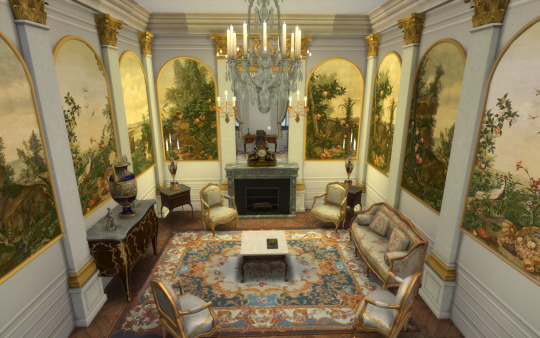




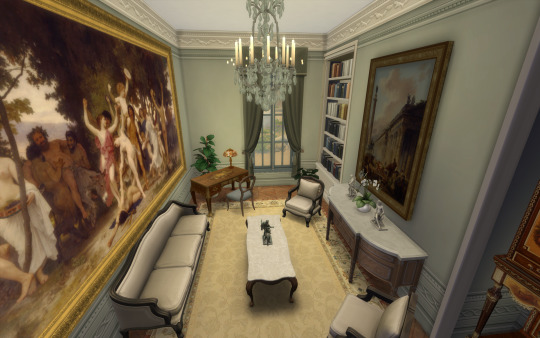

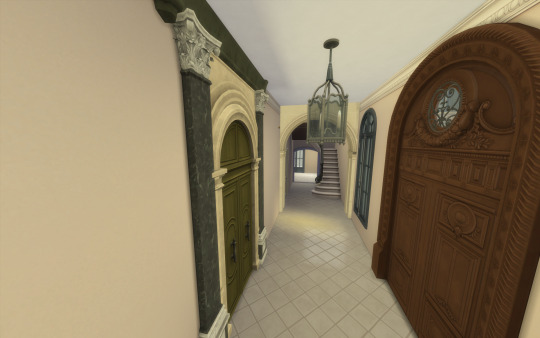







As allways, you will need the usual CC I use: all of Felixandre, Tha Jim, SYB, Regal Sims, etc.
Enjoy and tag me if you use it as i love the stories you create!!





Early access: (03/01|/2024)
DOWNLOAD: https://www.patreon.com/posts/96063778?pr=true
#sims 4 architecture#sims 4 build#sims4#sims 4 historical#sims4play#sims 4 screenshots#sims4palace#sims4building#sims4frencharchitecture#sims 4 royalty#ts4 download#ts4 simblr#ts4#ts4 gameplay#ts4 legacy#ts4cc#sims 4 aesthetic#the sims 4#the sims community#sims 4 community
19 notes
·
View notes
Text
gen Z hollywood actor bios be like:
she was born in malibu to an 80s supermodel and an investment banker and grew up dividing time between the family farmhouse in santa barbara & the beach house in malibu. her brother is a surfer & phone case designer. she was discovered by tatiana russo, the esteemed modelling scout, who is also her godmother, when she was 12 at her family's vineyard whilst celebrating kate moss' birthday and despite her early start in modelling, her true passion lay in acting as influenced by childhoods spent with "uncle" George Clooney. childhood pal and fellow model, juliette rockefeller describes her as "the biggest nerd and the sweetest person alive". they were both bridesmaids at Olivia Getty's 70s themed wedding to Dipping Hearts frontman Gus Saint Jerome. she's currently dating Jeff Scott Vanderbilt, model, crypto investor and heir to the Vanderbilt fortune. if she wasn't an actress/model, she would've liked to have become a 'wildlife photographer' and is deeply passionate about her ig book club where she recently read Normal People with her 26.8 million followers and went on live discussing it with fellow creative & bestie, Fai Khadra.
19 notes
·
View notes
Text
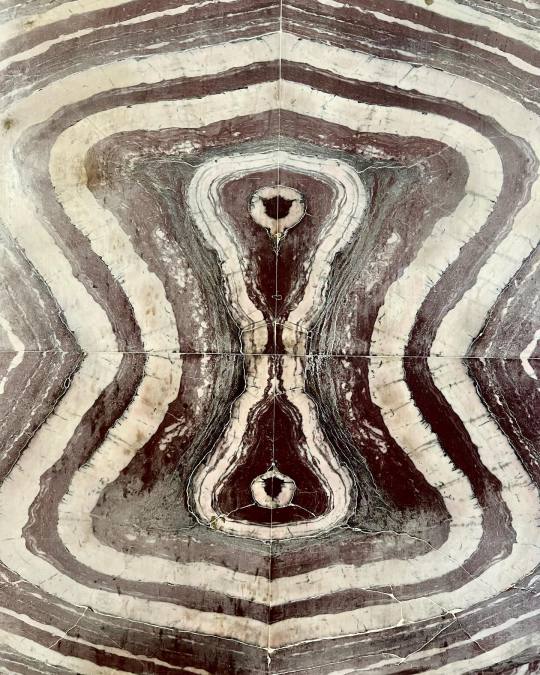

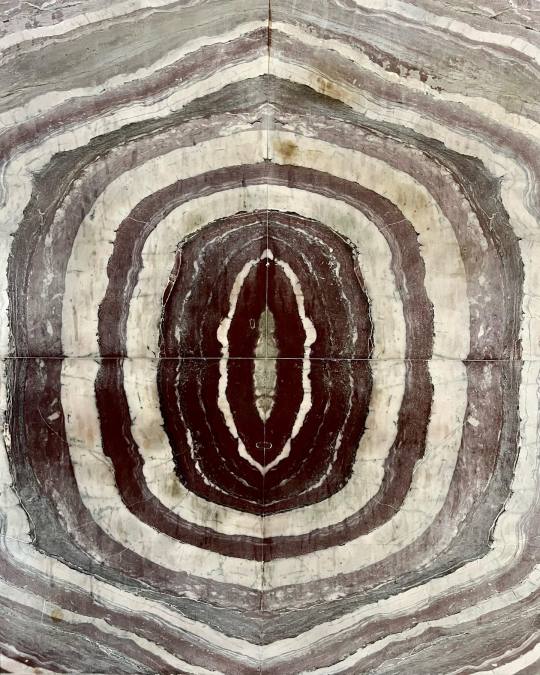

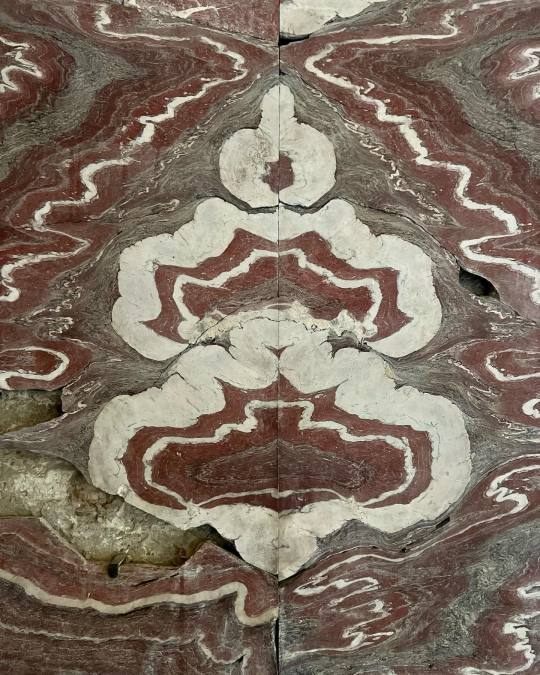


Eric Ghysels is showing us marble slabs on the columns of the basilica of San Vitale | Ravenna, Italy.
The Basilica of San Vitale in Ravenna bears witness to the power and influence of the Byzantine Empire in Western Europe. Taking the Church of Saints Sergius and Bacchus in Constantinople as its model, work on the Basilica began under Archbishop Ecclesius in 525, the year before the death of King Theodoric and was continued with money donated by Giulius Argentarius, a wealthy banker who supported Byzantine influence in Italy. The church, dedicated to Saint Vitalis, an early Christian martyr, was completed in 547 and consecrated by Archbishop Maximian on 19 April in the year 548. This church contains elements of all of the latest trends in ecclesiastical architecture of that time. It has an octagonal structure like a martyrium (an octagonal structure erected in memory of a martyr), and is big enough to cater for a large number of worshippers. The octagon has colonnades on two levels with niches, which are open on the sides, with triple archways dividing each niche. This text is from http://www.avrvm.eu/the-basilica-of-san-vitale-ravenna/
19 notes
·
View notes
Note
RDR Bri!!! Yeeehaw!! Brihaw!!!
send me an au and i’ll give you 5+ headcanons about it ✿
Brianne resides in the wealthiest area of Saint Denis, a major industrialized city and the state capital of Lemoyne.
Since there’s already a major financier/banker present in this universe (JD McKnight who takes over a majority of Cornwall Leviticus’ enterprises), we’re going to say her father (Baron Henry Landry) is a foreign investor looking to extend his enterprise into the America and Caribbean so he's competition.
Connections to highly ranked state officials, the mayor, local crime lords, etc. put her father in contact with the who’s who of the region. Her father also financially backs the Pinkerton National Detective Agency to maintain the security of his growing infrastructure. Brianne sometimes rubs elbows with these people as well.
Again, Brianne is a “thronback” (unmarried over the age of 26, she's in her 30s) / “off the shelf” / “unnatural” / basically she gets the terrible fate of unmarried women during this time period. As such her inheritance is under the control of her closest living male relative, her father (Baron Henry Landry). In the absence of her French mother, she is her father's caretaker and thus moves with him abroad.
(I want to say she quietly balances his books or does secretary work, maybe dabbles in charitable endeavors for the town, but ya know, she's an unmarried woman 💀).
Her train was robbed by the Van Der Linde gang bc of course it was.
#cyberpawn#⚘ ˚◞ answers ◞ 𝑜𝓊𝓉 𝑜𝒻 𝑜𝒻𝒻𝒾𝒸𝑒 𝒶𝓊𝓉𝑜𝓂𝒶𝓉𝒾𝒸 𝓇𝑒𝓅𝓁𝓎.#(( less haw and more yee...aaahh this is not fun for her ;;#thank you for sending this <3 ))
6 notes
·
View notes
Text
Bulgarians across the country observed the Day of Saint Nicholas on December 6, known as Nikulden, commemorating the revered figure of St. Nicholas of Myra. Originating from Patara in Asia Minor in the 3rd century, St. Nicholas led a pious life, aiding the destitute and weak while embodying the principles of faith and truth. Eventually, he became the Bishop of Myra and, upon his passing in 342, his relics were transferred to the city of Bari, Italy, where they remain preserved to this day.
St. Nicholas holds a special place in Bulgarian tradition, revered as the patron saint of travelers, sailors, and fishermen. Folklore envisions him commanding storms and the sea, often depicted sailing on a golden ship. One legend tells of him rescuing a sinking boat by plugging a hole with a carp.
For fishermen, Nikulden marks the conclusion of autumn fishing, celebrated through a bountiful feast brimming with fish dishes. The saint's influence extends to boat building, where it's believed placing an icon of St. Nicholas protects sailors from tempests.
Superstitious beliefs link St. Nicholas to miraculous acts, including leaving coins for the needy, similar to the tale where he aided a destitute father struggling to provide dowries for his daughters. Hence, the holiday holds significance for bankers as well.
In honor of St. Nicholas, the Bulgarian Orthodox Church conducts special liturgies, sanctifying fish dishes for the well-being of the faithful. Traditionally, a festive table is arranged featuring fish, often stuffed carp, with rice, walnuts, and onions.
Those bearing names associated with St. Nicholas - Nikola, Nikolina, Nikolay, Nina, and more - also celebrate on this day, which is additionally esteemed in the city of Burgas.
Modern-day customs emphasize festive gatherings and fish-laden meals as a tribute to the revered saint. St. Nicholas Day resonates as a cherished occasion of faith and festivity across Bulgaria.
2 notes
·
View notes
Photo

Happy Feast Day
Saint Matthew the Apostle
1st century
Feast Day: September 21
Patronage: accountants, Italy, bankers, tax collectors
Matthew, a former tax collector from Capernaum was called by Jesus to be His disciple. After his call, Matthew invited Jesus home for a feast. On seeing this the Scribes and the Pharisees criticized Jesus for eating with tax collectors and sinners. This prompted Jesus to answer, " I came not to call the just, but sinners." Matthew was the first Evangelist and one of the witnesses of the Resurrection and Ascension.
{website}
70 notes
·
View notes
Text
Fixed: December 5th: Verne makes a detour to dunk on Mormons.
During the night of the 5th of December, the train ran south-easterly for about fifty miles; then rose an equal distance in a north-easterly direction, towards the Great Salt Lake.
Passepartout, about nine o’clock, went out upon the platform to take the air. The weather was cold, the heavens grey, but it was not snowing. The sun’s disc, enlarged by the mist, seemed an enormous ring of gold, and Passepartout was amusing himself by calculating its value in pounds sterling, when he was diverted from this interesting study by a strange-looking personage who made his appearance on the platform.
This personage, who had taken the train at Elko, was tall and dark, with black moustache, black stockings, a black silk hat, a black waistcoat, black trousers, a white cravat, and dogskin gloves. He might have been taken for a clergyman. He went from one end of the train to the other, and affixed to the door of each car a notice written in manuscript.
Passepartout approached and read one of these notices, which stated that Elder William Hitch, Mormon missionary, taking advantage of his presence on train No. 48, would deliver a lecture on Mormonism in car No. 117, from eleven to twelve o’clock; and that he invited all who were desirous of being instructed concerning the mysteries of the religion of the “Latter Day Saints” to attend.
“I’ll go,” said Passepartout to himself. He knew nothing of Mormonism except the custom of polygamy, which is its foundation.
The news quickly spread through the train, which contained about one hundred passengers, thirty of whom, at most, attracted by the notice, ensconced themselves in car No. 117. Passepartout took one of the front seats. Neither Mr. Fogg nor Fix cared to attend.
At the appointed hour Elder William Hitch rose, and, in an irritated voice, as if he had already been contradicted, said, “I tell you that Joe Smith is a martyr, that his brother Hiram is a martyr, and that the persecutions of the United States Government against the prophets will also make a martyr of Brigham Young. Who dares to say the contrary?”
No one ventured to gainsay the missionary, whose excited tone contrasted curiously with his naturally calm visage. No doubt his anger arose from the hardships to which the Mormons were actually subjected. The government had just succeeded, with some difficulty, in reducing these independent fanatics to its rule. It had made itself master of Utah, and subjected that territory to the laws of the Union, after imprisoning Brigham Young on a charge of rebellion and polygamy. The disciples of the prophet had since redoubled their efforts, and resisted, by words at least, the authority of Congress. Elder Hitch, as is seen, was trying to make proselytes on the very railway trains.
Then, emphasising his words with his loud voice and frequent gestures, he related the history of the Mormons from Biblical times: how that, in Israel, a Mormon prophet of the tribe of Joseph published the annals of the new religion, and bequeathed them to his son Mormon; how, many centuries later, a translation of this precious book, which was written in Egyptian, was made by Joseph Smith, junior, a Vermont farmer, who revealed himself as a mystical prophet in 1825; and how, in short, the celestial messenger appeared to him in an illuminated forest, and gave him the annals of the Lord.
Several of the audience, not being much interested in the missionary’s narrative, here left the car; but Elder Hitch, continuing his lecture, related how Smith, junior, with his father, two brothers, and a few disciples, founded the church of the “Latter Day Saints,” which, adopted not only in America, but in England, Norway and Sweden, and Germany, counts many artisans, as well as men engaged in the liberal professions, among its members; how a colony was established in Ohio, a temple erected there at a cost of two hundred thousand dollars, and a town built at Kirkland; how Smith became an enterprising banker, and received from a simple mummy showman a papyrus scroll written by Abraham and several famous Egyptians.
The Elder’s story became somewhat wearisome, and his audience grew gradually less, until it was reduced to twenty passengers. But this did not disconcert the enthusiast, who proceeded with the story of Joseph Smith’s bankruptcy in 1837, and how his ruined creditors gave him a coat of tar and feathers; his reappearance some years afterwards, more honourable and honoured than ever, at Independence, Missouri, the chief of a flourishing colony of three thousand disciples, and his pursuit thence by outraged Gentiles, and retirement into the Far West.
Ten hearers only were now left, among them honest Passepartout, who was listening with all his ears. Thus he learned that, after long persecutions, Smith reappeared in Illinois, and in 1839 founded a community at Nauvoo, on the Mississippi, numbering twenty-five thousand souls, of which he became mayor, chief justice, and general-in-chief; that he announced himself, in 1843, as a candidate for the Presidency of the United States; and that finally, being drawn into ambuscade at Carthage, he was thrown into prison, and assassinated by a band of men disguised in masks.
Passepartout was now the only person left in the car, and the Elder, looking him full in the face, reminded him that, two years after the assassination of Joseph Smith, the inspired prophet, Brigham Young, his successor, left Nauvoo for the banks of the Great Salt Lake, where, in the midst of that fertile region, directly on the route of the emigrants who crossed Utah on their way to California, the new colony, thanks to the polygamy practised by the Mormons, had flourished beyond expectations.
“And this,” added Elder William Hitch, “this is why the jealousy of Congress has been aroused against us! Why have the soldiers of the Union invaded the soil of Utah? Why has Brigham Young, our chief, been imprisoned, in contempt of all justice? Shall we yield to force? Never! Driven from Vermont, driven from Illinois, driven from Ohio, driven from Missouri, driven from Utah, we shall yet find some independent territory on which to plant our tents. And you, my brother,” continued the Elder, fixing his angry eyes upon his single auditor, “will you not plant yours there, too, under the shadow of our flag?”
“No!” replied Passepartout courageously, in his turn retiring from the car, and leaving the Elder to preach to vacancy.
During the lecture the train had been making good progress, and towards half-past twelve it reached the northwest border of the Great Salt Lake. Thence the passengers could observe the vast extent of this interior sea, which is also called the Dead Sea, and into which flows an American Jordan. It is a picturesque expanse, framed in lofty crags in large strata, encrusted with white salt—a superb sheet of water, which was formerly of larger extent than now, its shores having encroached with the lapse of time, and thus at once reduced its breadth and increased its depth.
The Salt Lake, seventy miles long and thirty-five wide, is situated three miles eight hundred feet above the sea. Quite different from Lake Asphaltite, whose depression is twelve hundred feet below the sea, it contains considerable salt, and one quarter of the weight of its water is solid matter, its specific weight being 1,170, and, after being distilled, 1,000. Fishes are, of course, unable to live in it, and those which descend through the Jordan, the Weber, and other streams soon perish.
The country around the lake was well cultivated, for the Mormons are mostly farmers; while ranches and pens for domesticated animals, fields of wheat, corn, and other cereals, luxuriant prairies, hedges of wild rose, clumps of acacias and milk-wort, would have been seen six months later. Now the ground was covered with a thin powdering of snow.
The train reached Ogden at two o’clock, where it rested for six hours, Mr. Fogg and his party had time to pay a visit to Salt Lake City, connected with Ogden by a branch road; and they spent two hours in this strikingly American town, built on the pattern of other cities of the Union, like a checker-board, “with the sombre sadness of right-angles,” as Victor Hugo expresses it. The founder of the City of the Saints could not escape from the taste for symmetry which distinguishes the Anglo-Saxons. In this strange country, where the people are certainly not up to the level of their institutions, everything is done “squarely”—cities, houses, and follies.
The travellers, then, were promenading, at three o’clock, about the streets of the town built between the banks of the Jordan and the spurs of the Wahsatch Range. They saw few or no churches, but the prophet’s mansion, the court-house, and the arsenal, blue-brick houses with verandas and porches, surrounded by gardens bordered with acacias, palms, and locusts. A clay and pebble wall, built in 1853, surrounded the town; and in the principal street were the market and several hotels adorned with pavilions. The place did not seem thickly populated. The streets were almost deserted, except in the vicinity of the temple, which they only reached after having traversed several quarters surrounded by palisades. There were many women, which was easily accounted for by the “peculiar institution” of the Mormons; but it must not be supposed that all the Mormons are polygamists. They are free to marry or not, as they please; but it is worth noting that it is mainly the female citizens of Utah who are anxious to marry, as, according to the Mormon religion, maiden ladies are not admitted to the possession of its highest joys. These poor creatures seemed to be neither well off nor happy. Some—the more well-to-do, no doubt—wore short, open, black silk dresses, under a hood or modest shawl; others were habited in Indian fashion.
Passepartout could not behold without a certain fright these women, charged, in groups, with conferring happiness on a single Mormon. His common sense pitied, above all, the husband. It seemed to him a terrible thing to have to guide so many wives at once across the vicissitudes of life, and to conduct them, as it were, in a body to the Mormon paradise with the prospect of seeing them in the company of the glorious Smith, who doubtless was the chief ornament of that delightful place, to all eternity. He felt decidedly repelled from such a vocation, and he imagined—perhaps he was mistaken—that the fair ones of Salt Lake City cast rather alarming glances on his person. Happily, his stay there was but brief. At four the party found themselves again at the station, took their places in the train, and the whistle sounded for starting. Just at the moment, however, that the locomotive wheels began to move, cries of “Stop! stop!” were heard.
Trains, like time and tide, stop for no one. The gentleman who uttered the cries was evidently a belated Mormon. He was breathless with running. Happily for him, the station had neither gates nor barriers. He rushed along the track, jumped on the rear platform of the train, and fell, exhausted, into one of the seats.
Passepartout, who had been anxiously watching this amateur gymnast, approached him with lively interest, and learned that he had taken flight after an unpleasant domestic scene.
When the Mormon had recovered his breath, Passepartout ventured to ask him politely how many wives he had; for, from the manner in which he had decamped, it might be thought that he had twenty at least.
“One, sir,” replied the Mormon, raising his arms heavenward —“one, and that was enough!”
19 notes
·
View notes
Text
St Cajetan (1480-1547) Confessor, Founder, St Donatus of Arezzo (Died 362) Bishop, Martyr and all the Saints for 7 August
St Cajetan (1480-1547) Known as the “Father of Providence” and the “Huntsman of Souls” – Confessor, Founder of the Theatine Order – Priest, Reformer, Doctor of Civil and Canon Law, Diplomat, Mystic, Miracle Worker, apostle of the sick and the poor. Patron of the unemployed, workers, bankers and more.About St…

View On WordPress
#blvincentdel&039;aquila#saints7august#stalbertoftrapani#stcajetan#stdonatusofarezzo#stvictriciusofrouen
4 notes
·
View notes
Text
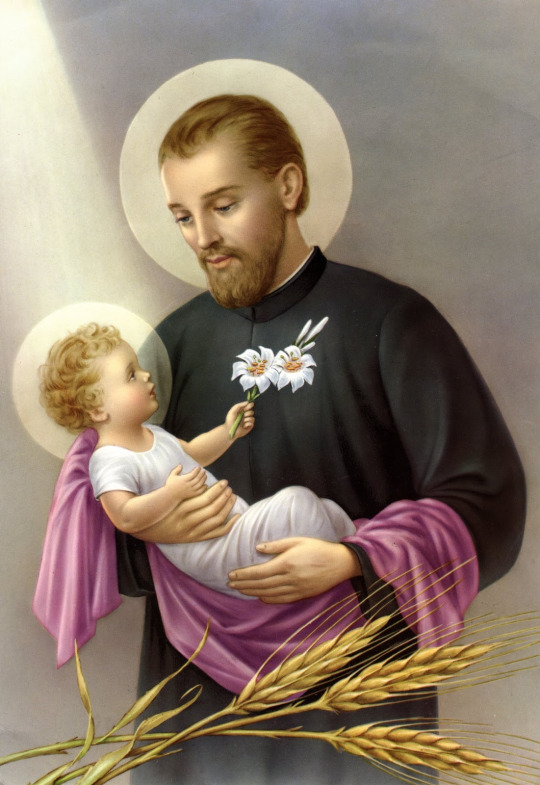
THE DESCRIPTION OF SAINT CAJETAN
Founder of the Theatine Fathers and Patron of Gamers
Feast Day: August 7
"If you want Christ to love you and help you, you must love Him, and always make every endeavour to please Him. Do not waver in your purpose, because even if all the saints and every single creature were to abandon you, He will always be near you, no matter what your needs may be."
Are you losing your job during the pandemic? Are you always wasting your money because you're bad at banking? Are you losing some stuff due to pulling a better gacha? This priest and founder is the one who solve all of your problems. This is Cajetan, nicknamed the 'Hunter of Souls', and is well-known as the patron saint of the unemployed, bankers, and gamers.
He was born Gaetano dei Conti di Thiene, in Vicenza, Veneto, Republic of Venice (now in Italy) on October 1, 1480, and is the son of Gaspar, lord of Thiene, and Mary Porta, persons of the first rank among the nobility of the territory of Vicenza in the Veneto region. When Cajetan was two, his father died. Quiet and retiring in nature, he was predisposed to piety by his mother.
Having obtained a doctorate in law and receiving a degree as doctor utriusque juris (both civil and canon law) from the University of Padua at the age of 24, and he spent two years as a senator in his hometown. In 1506, he worked as a diplomat for Pope Julius II, with whom he helped reconcile the Republic of Venice. But he was not ordained a priest until 1516. With the death of Pope Julius II in 1513, Cajetan withdrew from the papal court. Unsatisfied by that kind of life, he pursued his vocation in Rome, where he was ordained in 1516. Recalled to Vicenza by the death of his mother he founded in 1522 a hospital for incurables there. His interests were as much or more devoted to spiritual healing than the physical kind, and he joined a confraternity in Rome called the 'Oratory of Divine Love'.
A new congregation was canonically erected by Pope Clement VII in the year 1524. One of his four companions was Giovanni Pietro Carafa, the bishop of Chieti, elected first superior of the order, who later became pope as Paul IV. From the name of the city of Chieti (Theate in Latin), arose the name by which the order is known, the 'Theatines', commonly known as the Congregation of Clerics Regular.
They were committed to teach catechism, to assist the poor, and reform the clergy. They were known as Theatines in honor of the bishop of Chieti who joined them.
The order grew at a fairly slow pace: there were only twelve Theatines during the sack of Rome in 1527, during which Cajetan was tortured by the Spanish soldiers of Charles V who had mutinied, and they managed to escape to Venice, where they opened new houses. There Cajetan met Jerome Emiliani, whom he assisted in the establishment of his Congregation of Clerks Regular (Somascan Fathers). In 1533, he founded a house in Naples. The year 1540, found him in Venice again and from there he extended his work to Verona. He founded a bank to help the poor and offer an alternative to usurers (who charged high interest rates), and it later became the Banco di Napoli.
The reason why Cajetan is the patron of gamblers is this story. His connection to gambling is obscure. Popular lore says the people would ask him for a favor, and bet him a rosary that he couldn't come through. Since he always came through, he was able to get people to pray more.
Worn out by his restless apostolate, St. Cajetan died peacefully on August 7, 1547 at the age of 66. Advised by his physician not to lie in a hardboard but on a mattress, he replied: 'My Savior died on a cross, allow me at least to die on wood.'
Cajetan is beatified by Pope Urban VIII in 1629 and canonized by Pope Clement X in 1671. The Jesuit missionary, Eusebio Kino, who in 1691, established the mission San Cayetano de Tumacácori in honor of Cajetan. It is now Tumacacori National Historical Park in Arizona.
#random stuff#catholic#catholic saints#cajetan#san cayetano#congregation of clerics regular#theatines#gamers#gamblers#unemployed
3 notes
·
View notes
Text
The Place You're From and the Place You're At
Niall Williams, Louis Untermeyer, Julie Beck: 'The Place You're From and the Place You're At'

[Image: “What Do Now? (Tallahasssee, Florida),” by John E. Simpson. (Photo shared here under a Creative Commons License; for more information, see this page at RAMH.)]
From whiskey river:
We’re a race of elsewhere people. That’s what makes us the best saints and the best poets and the best musicians and the world’s worst bankers. That’s why wherever you go you’ll see some of us — and it makes…
View On WordPress
2 notes
·
View notes
Text
one time my very indulgent beloved took the friend group on one of those night time ghost tours, because we were in a Very Historic Very Haunted Southern Town. i say "indulgent" because he is not a ghost guy. anyway, it's late at night, a little chilly, everything besides the ghost tour is quiet, everybody but my beloved is going ooohh and ahhh at exploitive true crime etc type stories. with the patience of a saint, for like two hours, my beloved says nothing. the tour guide is yammering on about shadow people and a house where a banker's son got killed by the mob.
pensive, hands shoved in his pockets, listlessly kicking the haunted (OooooOOooO!) cobblestones, my beloved says, in a perfectly neutral whisper of a voice, "the real horror is that we're standing on an alleged mass grave of murdered slaves, but talking about one rich white boy and maybe, what, three property owners over the course of a century who had a few nightmares? the real horror is people and how we can treat other people."
and he didn't mean to be overheard and he wasn't trying to be a killjoy or make a point, but he said it at one of those perfect conversational lulls, thereby chastising everyone in earshot and it was SUCH A MOODKILLER, 10/10.
i never checked the yelp reviews for the tour but I know in my heart of hearts that even if they never posted it, somebody typed up a review that was like, "was implicitly scolded for being gross by an Ambiguously Ethnic Man with beard. do not recommend."
and this is the energy I want for my fictional sabor latino reluctant necromancer character: man who's not trying to be a dick about it but who really thinks you're focused on the wrong thing here
#text#personal#he's right tho#a few years later he took us to a late night haunted carnival park#(life is hard when you're the DM and everybody else has that shitty low brow horror taste)#there is an exhibit outside while you wait for your tour guide#my beloved politely silently reads the exhibit names until he gets to a picture with label#“what the FUCK is an orb???” (bewildered)#me: dust spots somebody else: GHOSTS yet another person: ENERGIES#my beloved (man with great knowledge of historic religious + occult practices who owns two copies of The Golden Bough): ...orbs?!? (pained)
2 notes
·
View notes
Text
Saint Nicholas
SAlso known as Nicholas of Myra, Nicolo, Claes, Nicolae etc
Classification: venerated as a saint by most branches of Christianity.
Facts:
He was a bishop of Myra, now known as Demre in modern turkey.
He lived in the early fourth century and died in approximately 350
He was buried in his own cathedral
Nicholas developed a reputation as a wonder worker and his shrine was, for centurys, a significant and important Christian pilgrimage site.
Favored People:
children, unwed mothers, pawnbrokers, captives, bankers, beggars, lawyers, woman who wish to marry, sailors, mariners, merchants, distillers
Attributes:
bishops mitre, a book, 3 golden balls
Sacred Animal:
In Bulgariann lore, a magical carp is his servant
Spiritual Allies:
In the context of icons and religious legends, Nicholas is often accompanied by angels, especially Gabriel and Michael
In the context of ritualized feast-day making, Nicholas is frequently accompanied by a helper spirit, typically a Pagan or demonic figure like krampus, ruprecht or black pete. While Nicholas - or someone dressed as him - rewards well-behaved children, the helper spirit - or someone dressed as that guise - punished the unruly under the direction of Saint Nick.
Ritual:
Saint Nickolas is a gift gaver but he does not dress like Santa Claus. He appears dressed as a bishop and there is nothing secular about him. Saint Nicholas does not visit homes at midnight. Instead, men impersonating him knock on the door in broad daylight accompanied by assistans and attendants. These representatives ask children to account for their behavior and may ask religious questions and make religious speeches.
Sacred Tree:
Pine
Sacred Plants:
Sanicula spp, damiana, a potent aphrodisiac known as Saint Nicholas in Mexico (stevia serrata)
Feasts:
6.December, his primary feast, 19, December in orthodox churches
Offerings:
donations and good deeds on behalf of the poor and needy, gifts for children, a basket filled with apples, nuts, candy, sweets, a stiff drink, candles

9 notes
·
View notes